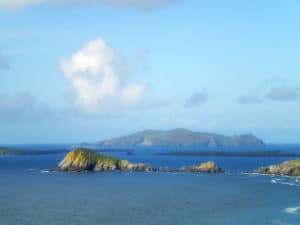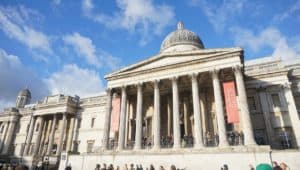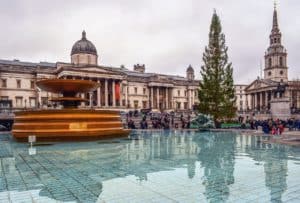The Folklore of Irish Mountain Ranges: Unveiling Mythical Legends and Ancient Tales
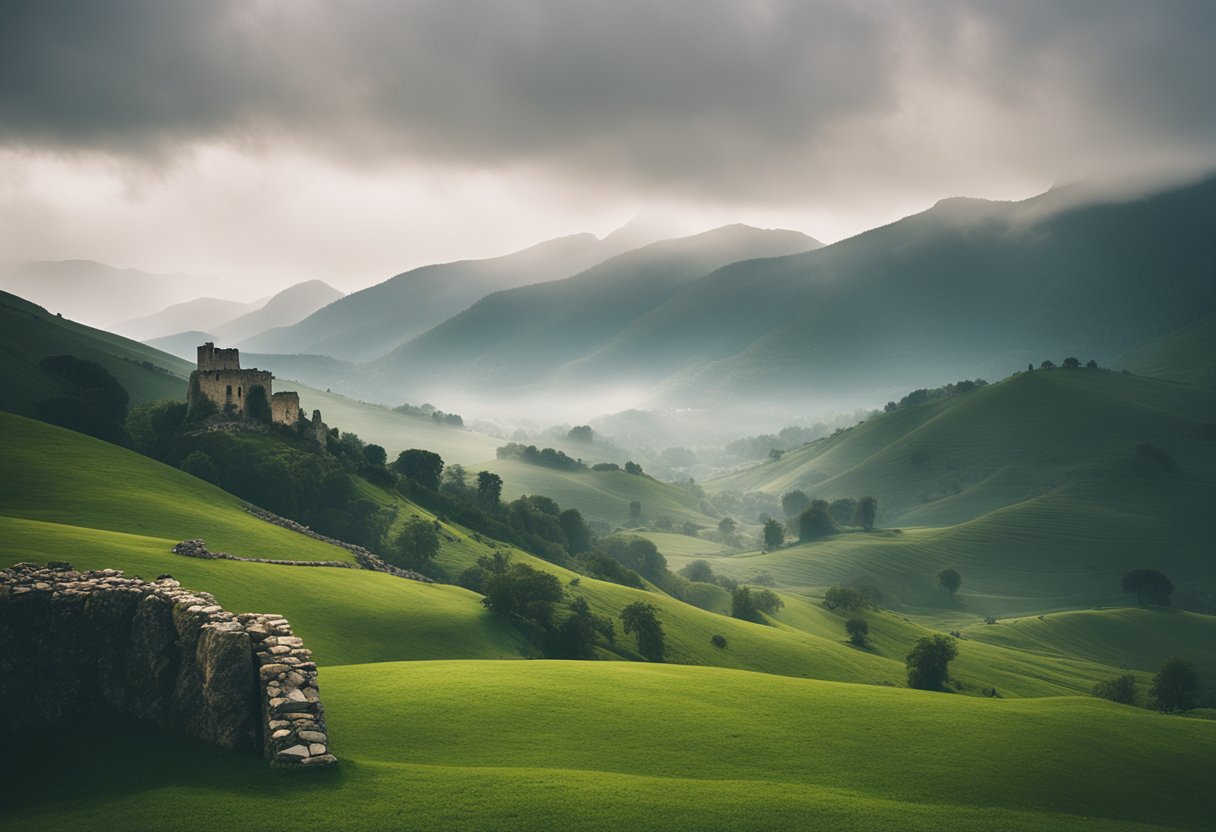
Updated On: April 24, 2024 by Maha Yassin
Ireland’s mountain ranges are more than just a stunning aspect of the natural landscape; they are steeped in a rich tapestry of folklore and myth handed down through generations. The peaks and valleys of these mountains are said to be the stomping grounds for a host of mythical beings and the settings for epic tales and heroic figures that embody the spirit of Irish mythology. The folklore of Irish mountain ranges is woven into this rugged terrain as varied as the landscape, with each mountain and hillock holding its secrets and sagas.
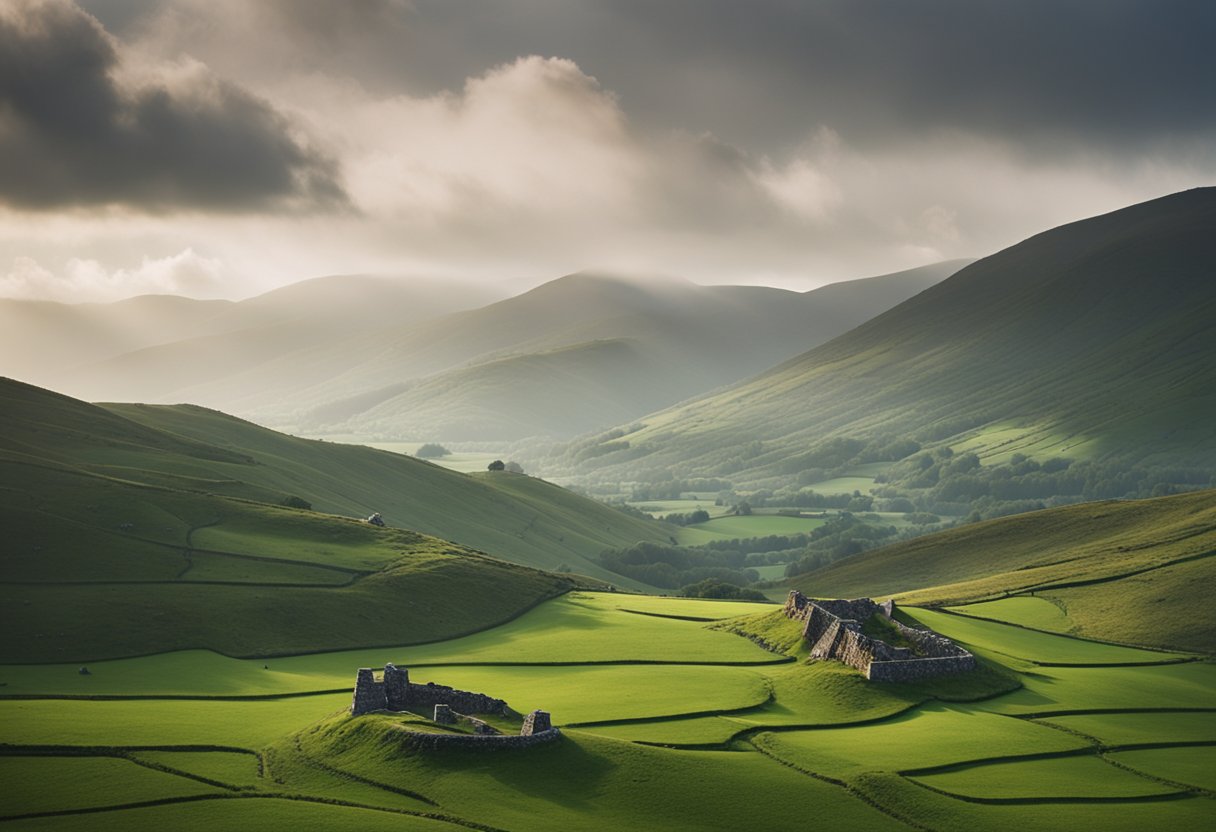
These mountains have been integral to seasonal celebrations and folk customs, marking the passing of time and the cycles of nature that were so vital to the ancient inhabitants of this land. Sacred sites dotting the high places were often associated with mountain worship and ritual, and to this day, carry a sense of mystery and otherworldliness. The enduring legacy of these tales is evident not just in the oral tradition but also in the musical and lyrical expressions that continue to celebrate the legendary landscape of Ireland.
Historical Roots of Irish Mountain Folklore
We explore the deep-seated traditions that have shaped the narratives woven around the lofty peaks of Ireland. The stories from these ancient lands speak of a textured history where myth intertwines with lived experience.
Ancient Myths and the Oral Tradition
Ireland’s mountain ranges have long been steeped in tales that reach back to the very foundations of Gaelic culture. These stories were preserved through an oral tradition that predates written records. Elders and seanchaí (storytellers) would convey tales of deities and heroes, infusing the landscape with a magical significance. Among the most celebrated narrative cycles is the tale of Samhain, a festival marking summer’s end and the harvest, which later meshed with All Saints’ Day to become Halloween. This period was brimming with supernatural occurrences, and the mountains served as a majestic backdrop for such otherworldly events.
Influence of Christianity on Folk Beliefs
As Christianity spread through Ireland, it interlaced with older Gaelic traditions, leading to a unique syncretism in mountain folklore. Saints and monks ventured up these high terrains, often seeking solitude for spiritual reflection and communing with the divine. These Christian figures were sometimes woven into the tapestry of pre-existing myths, transforming them into narratives that echoed biblical themes while retaining the essence of native folklore. The resulting stories connected the mysterious pagan past with the Christian present, illustrating Ireland’s cultural adaptation and transformation history.
The Legendary Landscape of Ireland
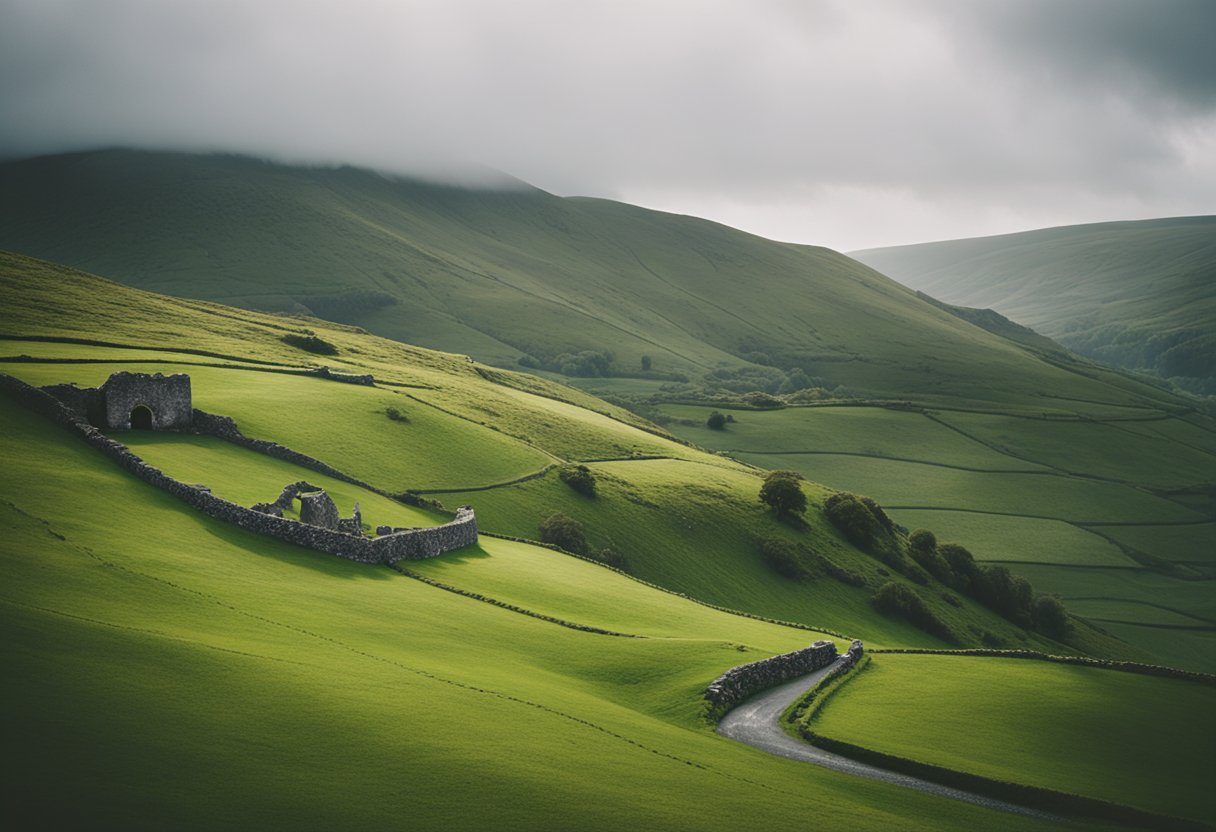
Ireland’s mountain ranges are steeped in a rich tapestry of myth and legend, their breathtaking landscapes a backdrop to stories passed down through generations.
Significant Mountain Ranges
Ireland’s mountain ranges are as varied as they are wondrous. The highest of the Mourne Mountains is Slieve Donard. We find a range that has inspired artists and storytellers alike. The Wicklow Mountains offer a refuge near Dublin, with their tales and histories. The MacGillycuddy’s Reeks in Kerry are home to Ireland’s highest peak, Carrauntoohil, and are a haven of natural beauty. Heading north, the Sperrin Mountains unfold with rugged beauty, while the Bluestack Mountains and the Galtee Mountains, Ireland’s highest inland range, carry their unique allure and stories.
Natural Formations and Mythical Significance
It’s not just the mountains themselves but the way they play into the landscape that holds significance. We see this in the rolling valleys and hills that give the land an almost magical quality. In all its glory, nature intertwines with legend here, where every hill and valley whispers tales of old. These natural formations are deeply rooted in Irish mythology, with stories of ancient heroes and mystical beings that are as much a part of the mountains as the rock and heather.
Our mountain ranges embody Ireland’s legendary landscape, a continuous source of natural wonder and myth.
Mythical Beings of the Irish Mountains
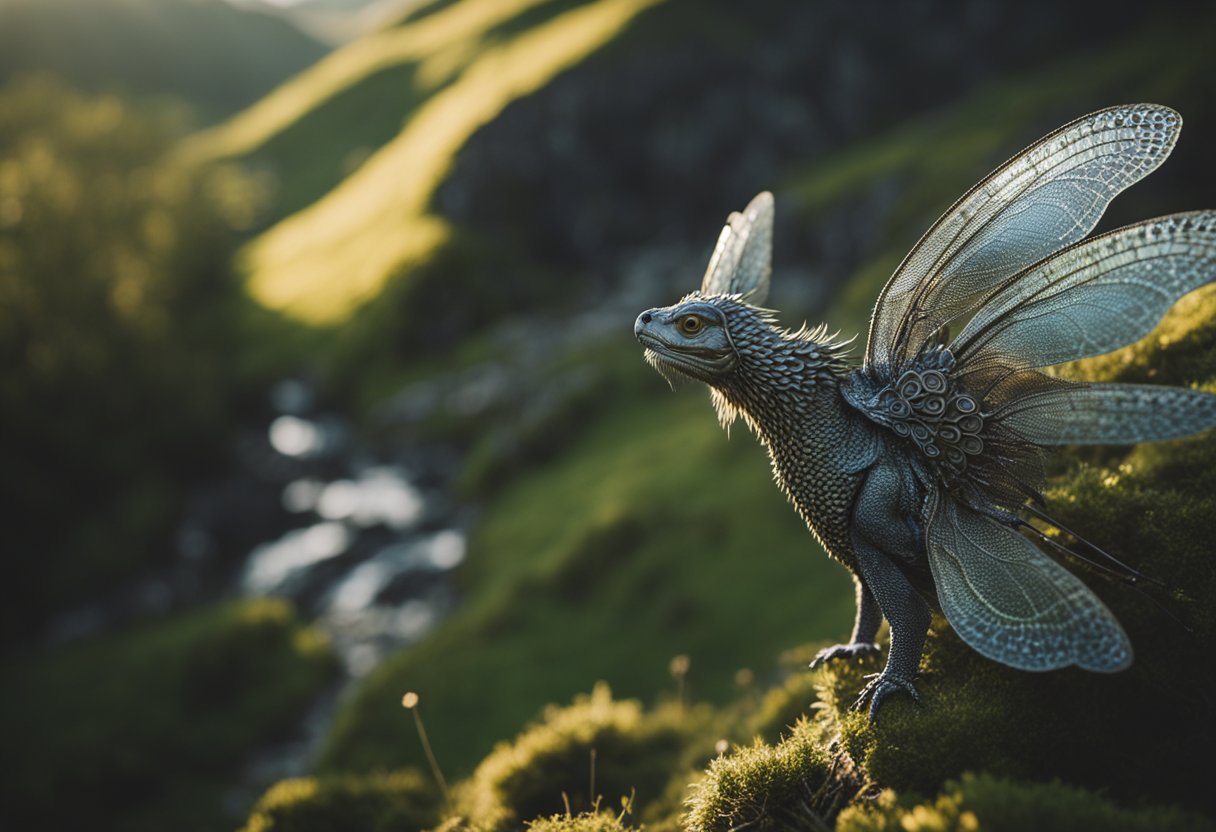
In our journey through the folklore of Irish mountains, we encounter an array of mythical beings that are as captivating as the landscapes they inhabit. These entities, deeply woven into the fabric of Irish mythology, have been the subjects of tales that echo the essence of the otherworld.
Fairies and Leprechauns
Fairies (Aos Sí) are an integral part of Irish mountain folklore, often described as protective yet elusive spirits of nature. They reside in fairy forts or hollows found in the verdant hillsides. These entities can bestow good fortune or misfortune, depending on how they’re treated.
Leprechauns, meanwhile, stand as Ireland’s crafty cobblers. These solitary beings prefer the tranquillity of secluded spots where they can work on their shoes. It’s believed that catching a leprechaun may lead to a pot of gold, but only if one is clever enough to outwit them.
The Banshee and Other Spirits
The haunting Banshee is often associated with an impending death within a family. Ubiquitous across many Irish ranges, this spirit’s mournful wails serve as a solemn omen. Sightings describe her as a wraith-like figure draped in a grey cloak, her face obscured by a veil.
Other spirits, such as the Pooka, are shape-shifting creatures that roam higher altitudes and are known for their trickster nature. They commonly transform into terrifying animals, leading unwary travellers astray with their deceptive antics.
Our understanding of these mystical entities is not merely based on superstition but on a profound respect for the heritage that shapes our perception of the natural world. The highland spirits of Ireland serve as a reminder of our enduring connection to the cultural tales passed down through the generations.
Epic Tales and Heroic Figures

Irish mountain ranges serve as stunning landscapes and silent witnesses to Ireland’s rich tapestry of myth and legend. These lofty heights echo the tales of ancient heroes and epic battles that form the core of Ireland’s mythological cycles.
Warriors and the Ulster Cycle
The Ulster Cycle, a captivating body of work from Irish folklore, narrates the heroic deeds of fabled warriors in ancient Ulster. Chief among these heroes is Cú Chulainn, whose feats in the epic Táin Bó Cúailnge resonate through the hills. His extraordinary martial skills and tragic destiny embody the spirit and values of the time. The Táin Bó Cúailnge, also known as The Cattle Raid of Cooley, is a testament to his strength and the indomitable warrior ethos celebrated in the Ulster Cycle.
The Fianna and Fenian Legends
The Fenian Cycle, or Fiannaíocht, encompasses the legends of the Fianna, bands of noble warriors who roamed the Irish countryside. The leader of the Fianna, Fionn mac Cumhaill—also known as Finn MacCool—is a revered figure whose stories are interwoven with the fabric of Ireland’s mountains. The Fianna’s acts of bravery and their pursuit of wisdom and justice are chronicled in tales passed down through generations. The legendary heroism of these figures, such as in the tale of Fionn mac Cumhaill, continues to inspire and captivate those who wander the emerald landscapes of Ireland.
Seasonal Celebrations and Folk Customs
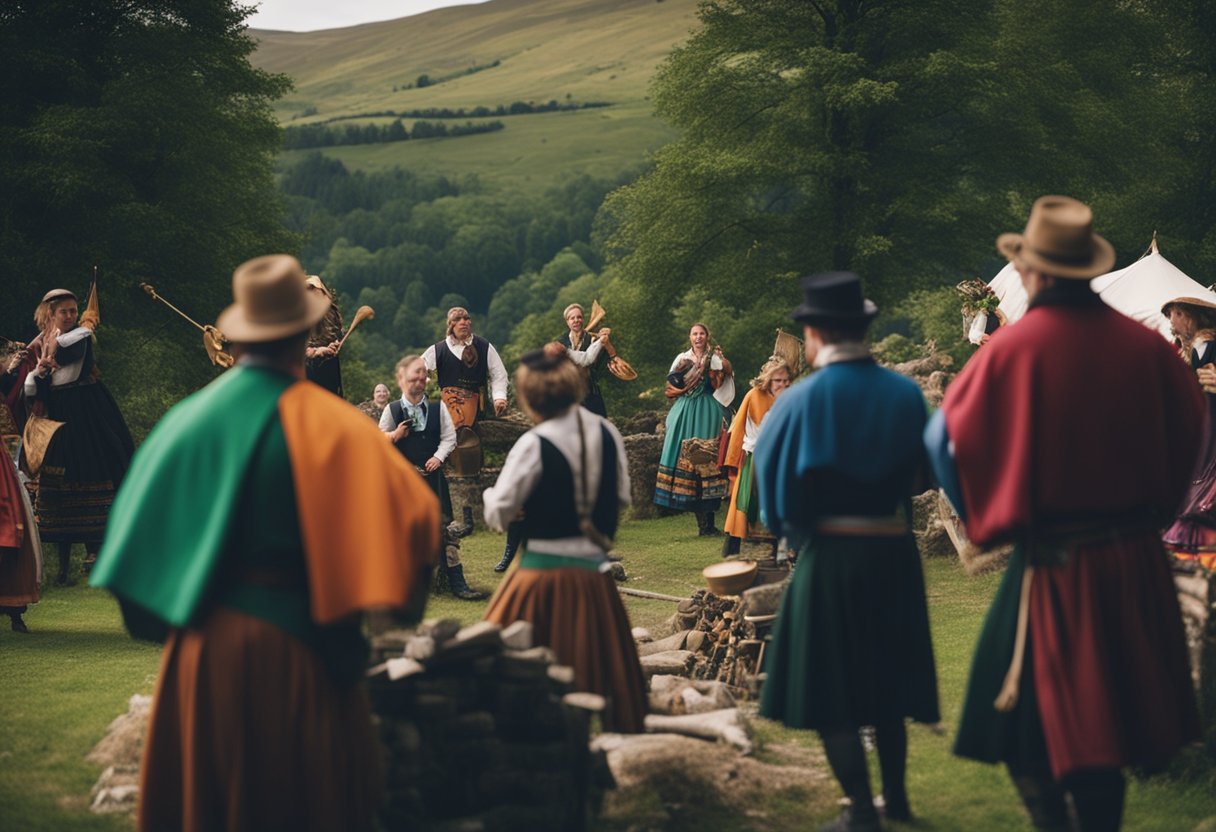
In the tapestry of Irish mountain folklore, seasonal celebrations and age-old customs are deeply interwoven, reflecting both our agrarian past and the overlay of Christianity on older traditions.
Festivals and Life Events
We find that in the shadow of Ireland’s mountain ranges, our ancestors’ lives were punctuated by festivals such as Samhain, marking the end of the harvest season and the beginning of winter. This festival, now celebrated as Halloween, was one of the cornerstones of our annual cycle, intertwined with superstitions and the belief that it was a time when the veil between worlds was at its thinnest.
The life cycle was also celebrated with customs surrounding life events—particularly weddings. Drawing on our oral tradition, many of these rites were designed to bless the couple with good fortune. For example, it was customary to tie a hen that would soon lay an egg near the wedding bed, symbolising fertility.
Agricultural Rites and Superstitions
In agricultural practices, the denizens of the highlands held superstitions that guided their work. Planting and harvesting rituals were often carried out with specific chants and prayers to ensure a bountiful yield. Moreover, certain days were deemed more auspicious for such tasks, often drawing from a mix of pagan belief and Christian influence.
A well-known custom was the decoration of livestock with garlands at Beltane to protect them as they were moved to summer pastures. The significance of this ritual was dual, combining the need to safeguard the animals with a celebration of the season.
These customs have been preserved and passed down throughout history, reflecting a reverence for tradition and the natural world. Through each generation, the mountains have borne witness to our continual weaving of folklore, a testament to our collective identity and the endurance of our cultural heritage.
The Interplay of Nature and Irish Folklore
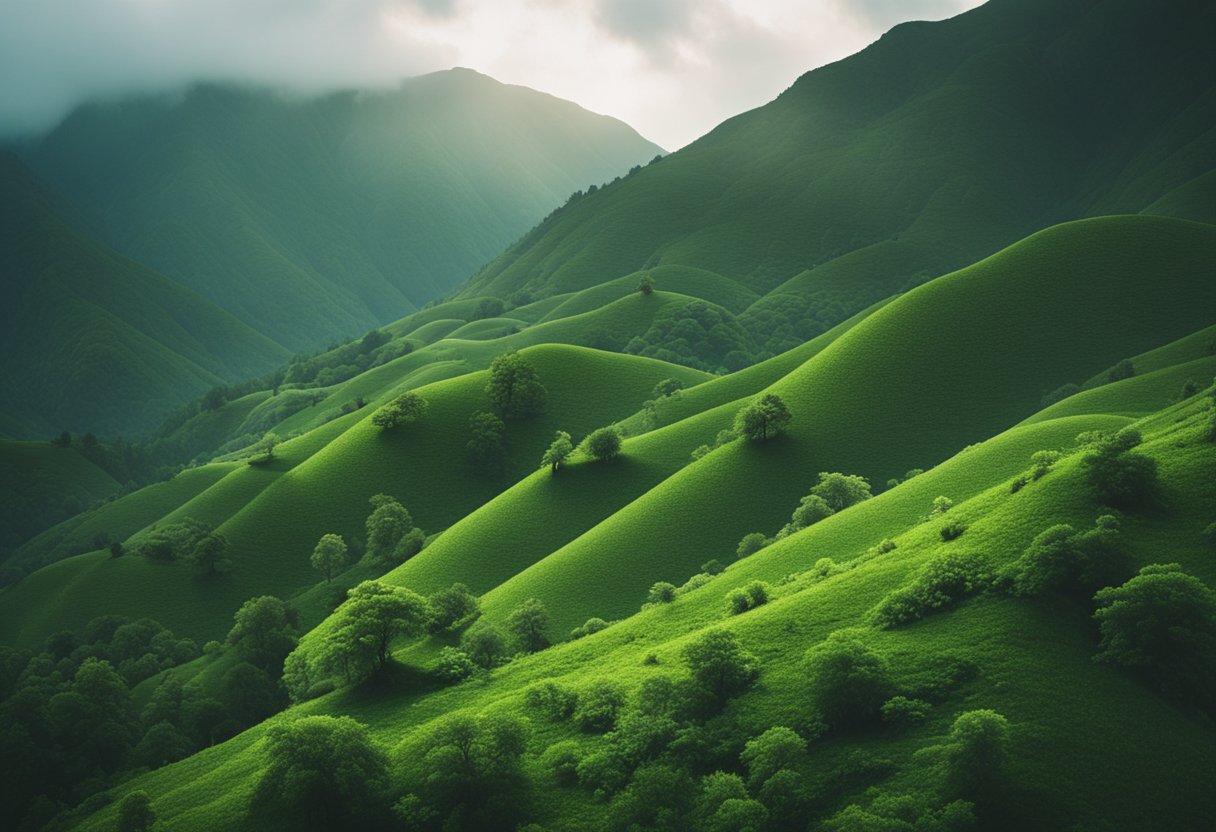
Irish folklore is intrinsically woven with the natural elements of the island’s mountain ranges. Weather phenomena and diverse ecosystems have long fuelled the myths and stories passed through generations.
Weather and the Natural Elements
With its penchant for rapid changes, the temperamental Irish climate is mirrored in our folklore, where it’s often depicted as the breath and mood of the divine. Summer skies in the mountains can swiftly yield to tempestuous winter storms, inspiring tales of capricious deities governing the weather. These narratives underline respect for nature’s powerful, unpredictable forces and the need to remain in harmony.
Flora, Fauna, and Folk Tales
Sublime landscapes host a rich tapestry of flora and fauna, each with its own story. Plants like the rowan tree believed to ward off malevolent spirits, and animals like the ethereal white stag, often perceived as a guide to the otherworld, are entwined with Irish mysticism. These creatures and plants found across our verdant landscape aren’t just subjects of tales; they are integral characters shaping the essence of our stories and identities.
By acquainting ourselves with these stories, we preserve more than just lore; we safeguard the spirit of Ireland itself, ensuring that the whispers of the mountains and the lullabies of the forests are not lost to time.
Sacred Sites and Mountain Worship
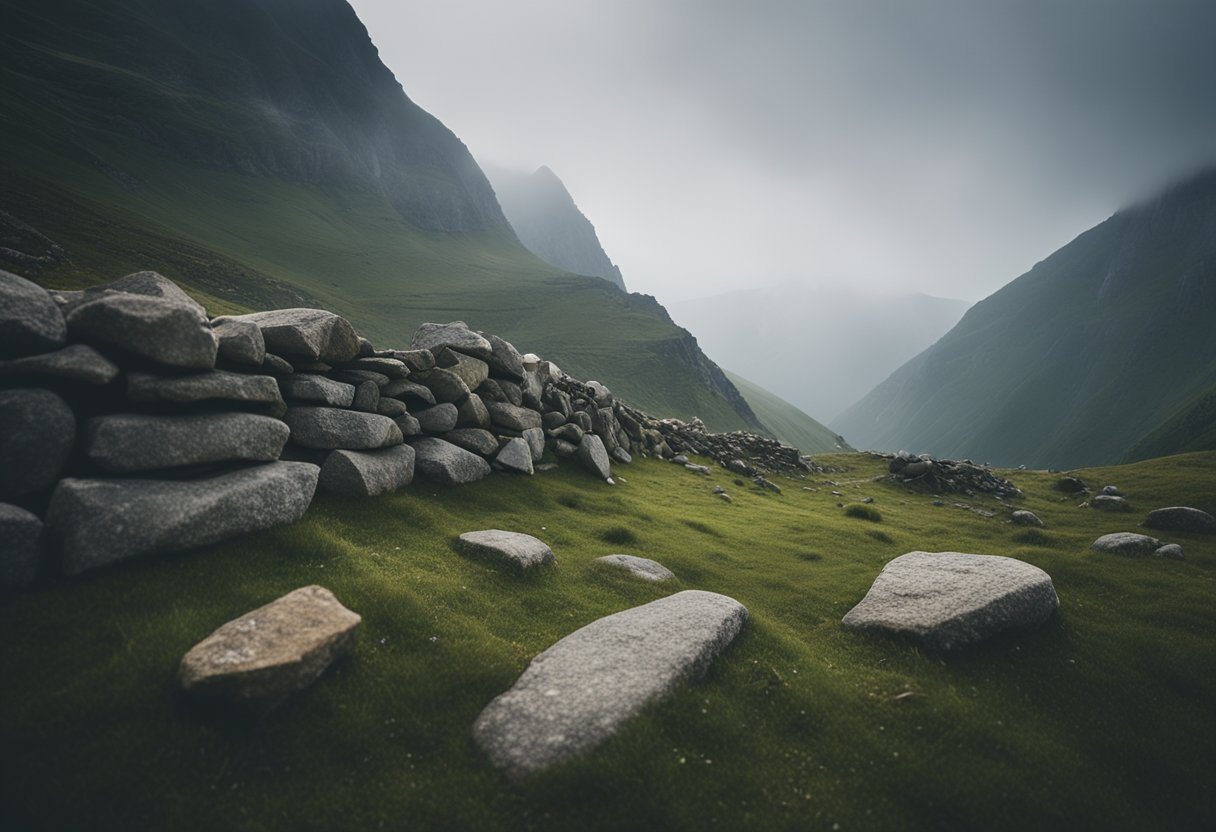
In Ireland, the sacred landscapes have long been intertwined with the practices of early pagan deities and the veneration of Christian saints. Notable mountain ranges in Ireland serve as geographical landmarks and spiritual beacons steeped in lore and legend.
Saints and Pagan Deities
Irish mountains have been historically perceived as dwelling places or gateways to the divine. Saint Patrick, Ireland’s patron saint, is famously associated with Croagh Patrick, where he is said to have fasted for forty days. The belief is that this act banished snakes from Ireland, a metaphor often interpreted as the ousting of pagan practices. Additionally, hags, often depicted as divine or supernatural beings in Irish mythology, are said to inhabit these sacred peaks, leaving their mark in the landscape with cairns and megalithic tombs as a testament to their presence.
Pilgrimages and Sacred Summits
For centuries, pilgrimages have been a central part of the Christian tradition in Ireland, with many devoted individuals ascending sacred summits like Croagh Patrick in honour of St. Patrick, performing ritualistic walks around cairns or stations enshrined in Christian and pre-Christian customs. The incorporation of deity worship transformed with the onset of Christianity, as hills and mountains previously home to rituals for gods and goddesses adapted to fit the veneration of saints. These acts of ascent are not just exercises of faith but also pay homage to Ireland’s ancient, spiritual geography.
Musical and Lyrical Expressions of Mountain Folklore
In the lush greenery of Ireland’s mountain ranges, folk music and storytelling are deeply intertwined with the land’s history and culture. These forms of expression echo the spirit and tales of the Irish landscape through the sounds of traditional instruments and the poetry of dance.
Folk Music Traditions
The harp plays a central role in our musical homage to the mountains. As the national symbol of Ireland, the harp evokes the nation’s soul, with melodies often reflecting the contours and rhythms of the Irish highlands. Our folk music finds its roots in these mountains, with tunes passing from generation to generation, preserving the essence of our homeland.
For instance, the ballad “The Mountains of Mourne” tells of the stunning beauty of the Mourne mountains and the sentiment of those who reside there while also capturing a sense of nostalgia for this majestic landscape. This melody rings as a testament to the pride of the Irish people in their natural surroundings and heritage.
Traditional dance also embodies the storytelling of our folklore. The fluid movements and energetic steps of Irish dance mirror the lively spirit of the mountainous terrain. Whether it’s the soft shoe of the sean-nós or the hard shoe rhythms, each dance step tells a part of our history and reflects our communal resilience.
Storytelling Through Song and Dance
Our ancestors used storytelling through song and dance not merely as entertainment but as a means of sharing the narratives of our lands. Each song carries a tale, from the mythical to the biographical, encapsulating the essence of the mountains that cradle the island.
The song “The Real Old Mountain Dew,” is rich with the description of Irish moonshine, known as poitín, set against the backdrop of our wild landscapes. The lyrics offer a glimpse into the mischief and revelry associated with the mountains, where distilling the drink was both an art and an act of defiance.
Through music and dance, we become the custodians of an oral tradition that celebrates and preserves our mountain folklore. As we play our harps and step in the dance, we ensure that the heartbeat of our mountains continues to resonate across the world.
Modern-Day Mythology and Cultural Continuity
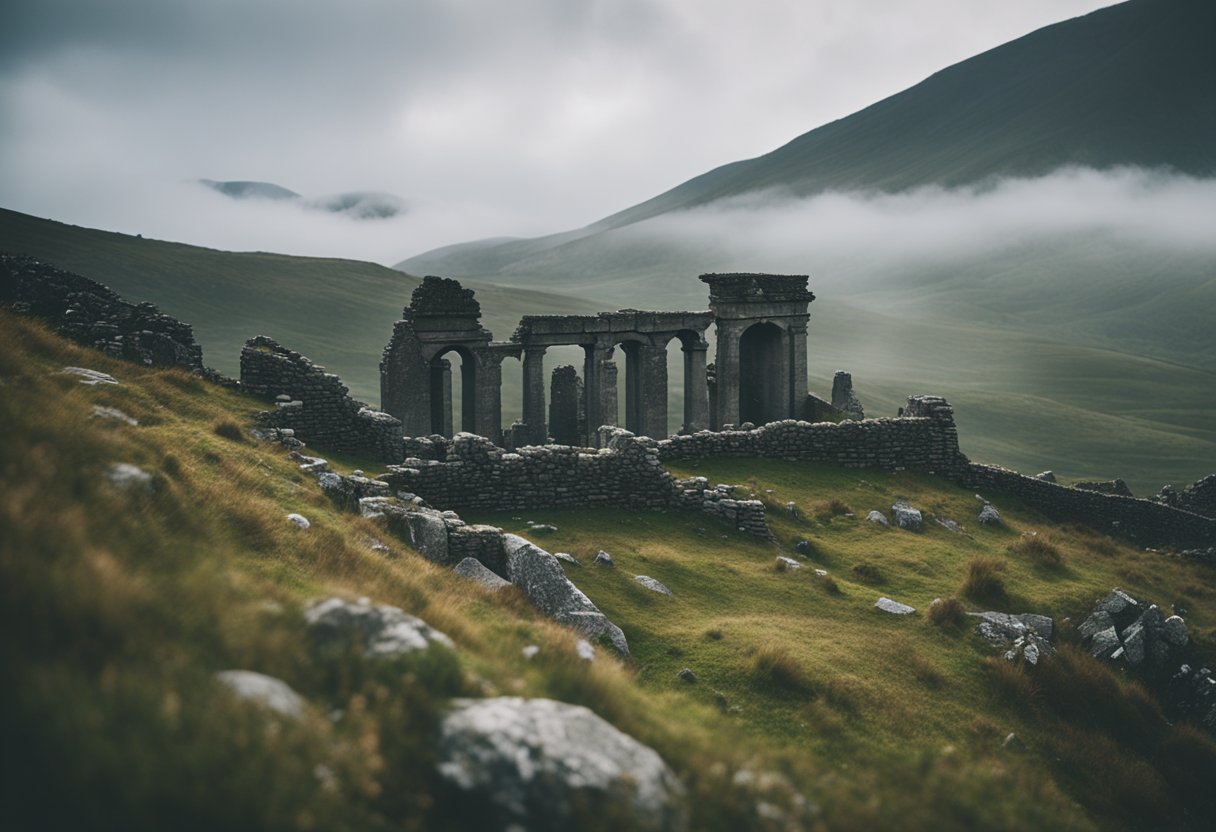
The thrust of Irish mountain folklore into contemporary culture demonstrates a seamless blend of age-old tales with present-day expressions. Keeping the essence of the past alive, we are committed to traversing the dynamic landscape of Irish mythology.
Transmitting Legends to New Generations
The oral tradition has always played a pivotal role in preserving the stories that form the backbone of Irish heritage. It’s a living tapestry where legends like the Children of Lir continue to captivate audiences. Storytelling sessions and interactive Gaelic language workshops facilitate the transfer of these Irish myths to today’s youth. Schools and cultural institutions emphasise the significance of such folktales, ensuring that the lessons and enchantments of old are not lost to time.
Contemporary Interpretations of Folklore
Our current artistic landscape breathes new life into traditional Irish folktales. Through various mediums such as literature, film, and music, we see a resurgence of these narratives, now dressed in modern garb. Creators draw inspiration from our mythological past, reimagining age-old stories to resonate with the present. Far from being dormant relics, these myths serve as a wellspring for contemporary creativity, melding the ancient with the avant-garde, thus reinforcing the cultural continuity of Ireland’s enchanting mountain lore.
Exploring Irish Mountains
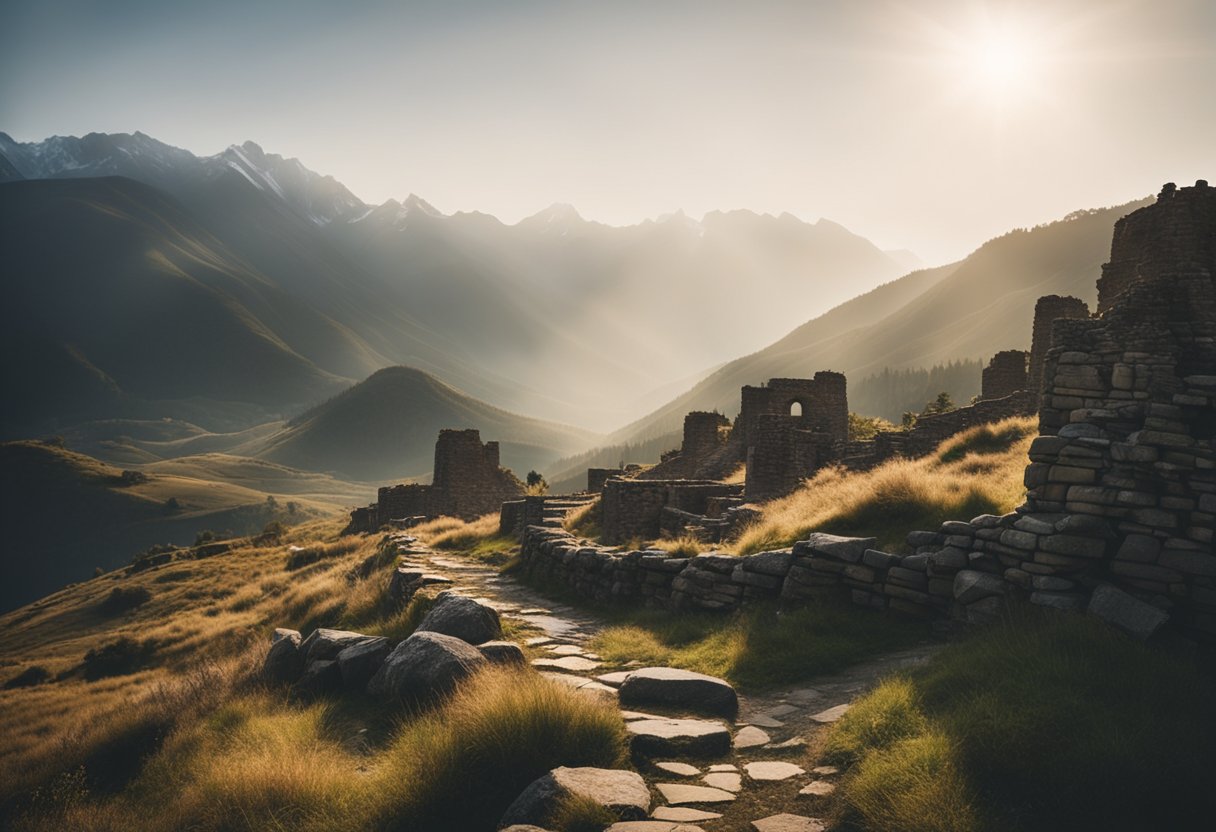
When we set out to explore the mountains of Ireland, we’re greeted with a rich tapestry of folklore and stunning natural beauty. As enthusiasts of both hiking and kayaking, we understand the need for the right gear to appreciate these landscapes fully.
Donegal stands out with its rugged beauty and challenging trails. It’s an attraction for those who seek the thrill of reaching the summit and for anyone who loves the outdoors. The Blue Stack Mountains are a particular highlight, with paths that beckon the adventurous at heart.
For a well-mapped experience, Mount Leinster, part of the Blackstairs Range, offers a more structured climb with marked trails. Here, our ascent is rewarded with sweeping views, and the mountain’s accessibility makes it a prime choice for novice and seasoned hikers.
The beauty of kayaking comes alive in the shadow of these peaks. Experiencing the Irish landscape from the water offers a unique perspective and an intimate encounter with nature’s grandeur.
| Essential Gear for Mountain Activities |
|---|
| – Sturdy hiking boots |
| – Weather-appropriate clothing |
| – Detailed map and compass |
| – Ample water and snacks |
| – First aid kit |
Remember, each mountain has its character and challenges. Whether you’re drawn to the Legends of Donegal or the wakes of the kayaker’s paddle, Ireland’s mountains provide a splendid backdrop for lore and adventure.
Myths Tied to Specific Locations
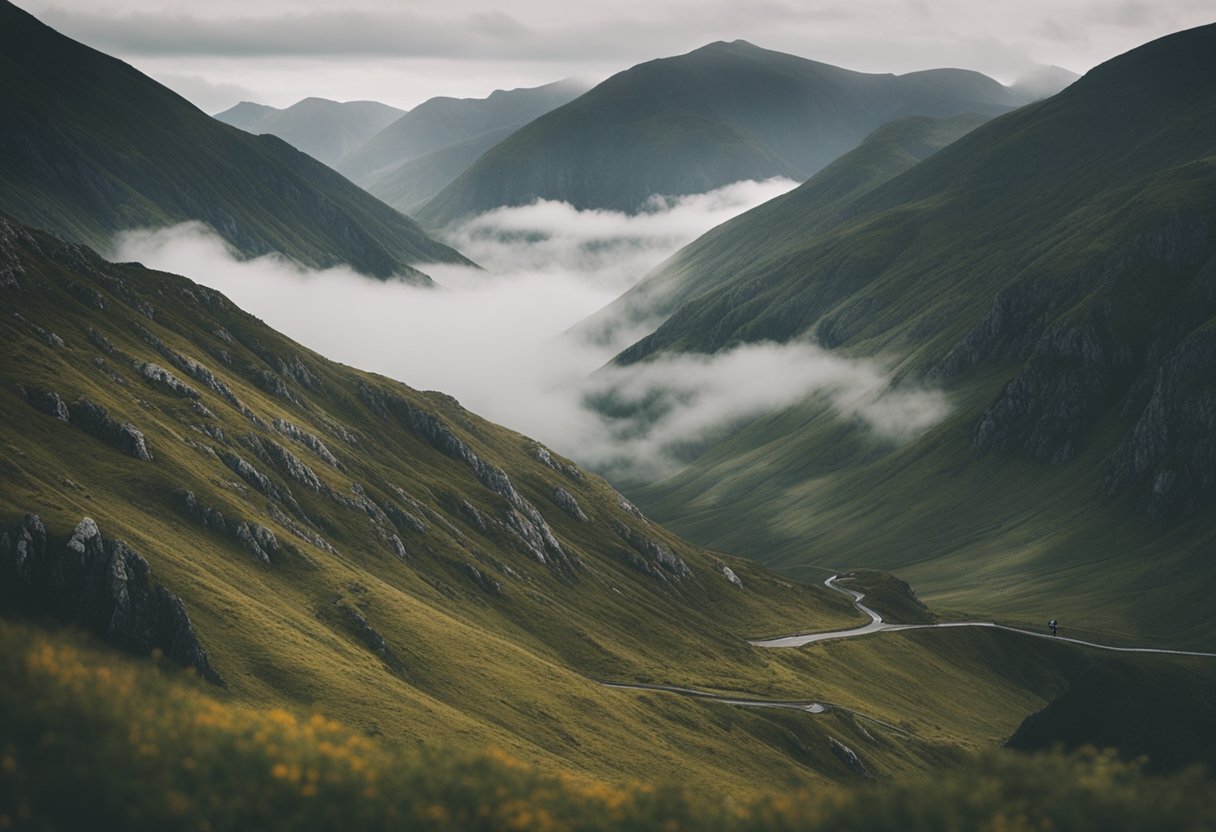
In the tapestry of Irish folklore, certain mountains and ruins stand prominent, woven with tales of bygone ages. As we explore these storied places, the whisper of legend is as palpable as the mountain breeze and as clear as the lakes that mirror the sky.
Enigmatic Castles and Ruins
Amidst Ireland’s rugged landscapes, the ruins of ancient castles are often the centrepieces of local myths. For instance, the Rock of Cashel in County Tipperary is steeped in legends. It is said that St. Patrick banished Satan from a cave, resulting in the Rock’s appearance. On the other hand, Slieve Donard in County Down, part of the Mourne Mountains, is named after Saint Donard and surrounded by myths about him and his heritage.
- Rock of Cashel: Location of St. Patrick’s legendary encounter with Satan.
- Slieve Donard: Tied to Saint Donard, with a summit often clouded in myth.
Lakes, Rivers, and Hidden Trails
Our emerald isle is also home to serene yet mysterious bodies of water. Carrauntoohil, the highest peak in Ireland, overlooks the pristine lakes of Killarney and has long been the subject of folklore about the ancient Tuatha Dé Danann and their magical artefacts. Trails leading to it offer an experience akin to walking through a storybook, and a kayak journey on the lakes can feel as though one is gliding through legends whispered by the surrounding peaks.
- Lakes of Killarney: Whispered to be watched over by the mystical Tuatha Dé Danann.
- Trails: Offer pathways through history, with each step echoing the stories of the land.
Frequently Asked Questions
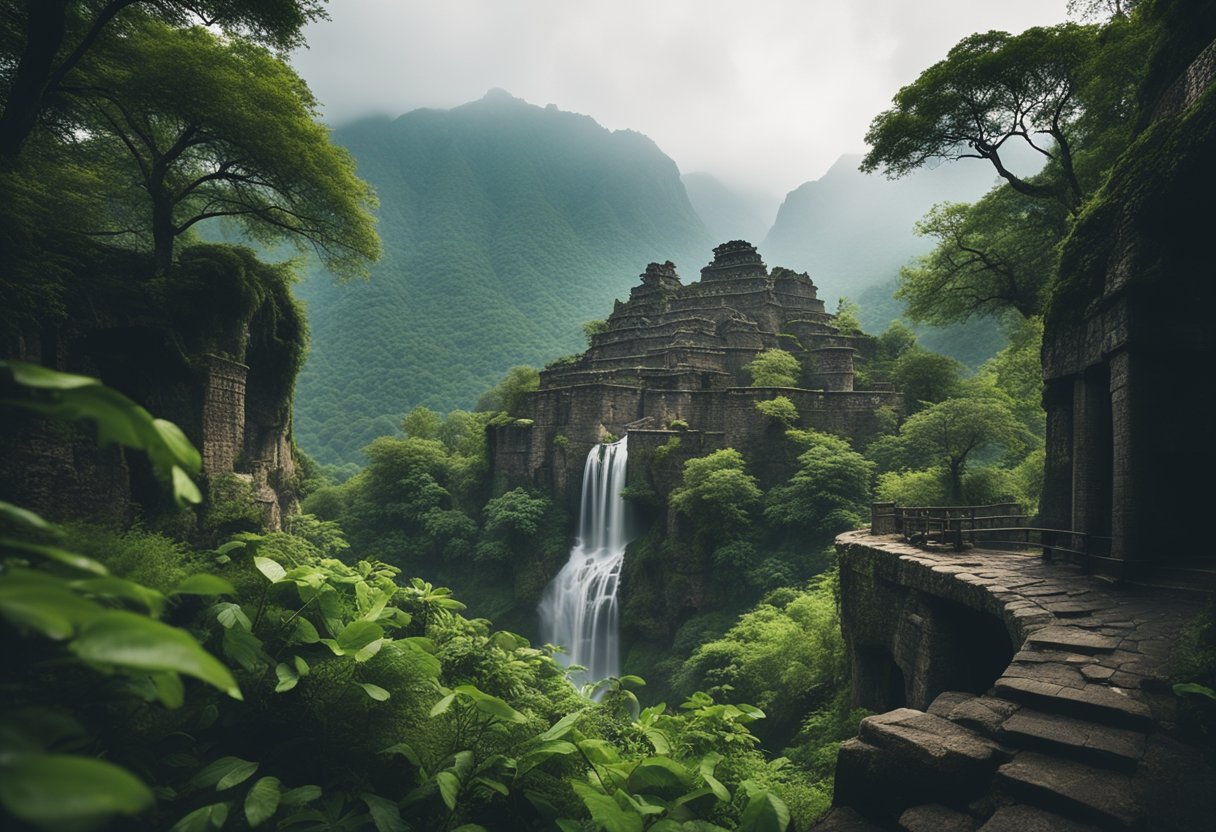
This section addresses some of the most intriguing queries about the rich tapestry of tales and myths that shroud the Irish mountain ranges. These frequently asked questions highlight the entwining of natural beauty with the mystical allure of Irish folklore.
What legends are associated with the Mourne Mountains?
The Mourne Mountains are steeped in legends and are the inspiration behind C.S. Lewis’s magical land of Narnia. Their rugged landscape is home to myriad hiking trails and ancient tales that enchant visitors and locals alike.
Which myths are connected to the highest peaks in Ireland?
The highest peaks in Ireland, such as Carrauntoohil in the MacGillycuddy’s Reeks, are often shrouded in myths of ancient gods and mystical beings from Irish mythology, standing as silent sentinels to Ireland’s vibrant past.
Can you recount tales linked to Slieve Donard?
Slieve Donard, part of the Mourne range and the tallest mountain in Northern Ireland, is associated with the legend of Saint Donard, who is said to have sought solitude at the mountain’s summit, marking it as a place of spiritual significance.
What are the key elements of Slieve Gullion’s folklore?
Slieve Gullion’s folklore is rich with stories of the Cailleach Beara, an ancient hag that shaped the landscape. The mountain is also central to tales of the legendary hero Cú Chulainn and other figures from the Ulster Cycle.
How is Irish mythology represented in the mountainous landscapes of Ireland?
Irish mythology is vividly represented in the mountainous landscapes through sagas of heroism, battles with supernatural entities, and otherworldly adventures, all set against the backdrop of Ireland’s formidable peaks and valleys, which still bear the names of these ancient tales.
Are there any folklore stories specific to mountain lakes in Ireland?
Yes, Ireland’s mountain lakes, known as loughs, are often said to be dwelling places of mysterious entities like water spirits and are central to many local myths, including stories of submerged cities and enchanted isles.




